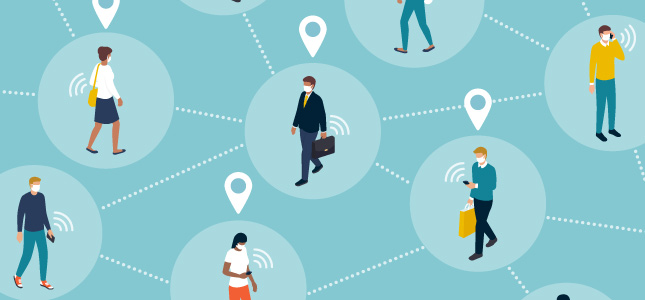Contact tracing is a critical component to containing and flattening the curve of COVID-19. Tracking those who are infected and who may be exposed helps agencies stay ahead of potential hot spots and understand how and where the disease is spreading.
During the TTEC on-demand webinar, “Contact tracing: Why the road to recovery requires people, process and technology,” experts from TTEC and Pegasystems shared insights about how government agencies are ramping up contact tracing programs with a technology-enabled, empathetic approach.
While contact tracing itself is not new, “it’s going to take something fundamentally different than what historically has been done before,” to meet the challenges of COVID-19, noted TTEC CMO Nick Cerise. The speed and scale of the virus means a new approach is essential. Government agencies are looking at the whole continuum—evaluate, trace, and care—to contain the spread and engage the community in new ways.
There’s no standard playbook and different agencies have different needs. As state and local governments look to contact tracing, here are 4 lessons learned from early COVID-19 contact tracing initiatives that show the value in blending technology and humanity on the roadmap to recovery.
1. Centralize the response, but personalize the outreach
Speed is the name of the game. The faster you can identify who is infected and where they might have exposed others, the faster containment can happen. To do that, speed is also essential to get programs up and running in record time. Centralize efforts as much as possible to make decisions fast, get swift budget approvals, share technology, and streamline ongoing contact tracing operations.
A centralized contact tracing effort at the state level is more effective than a patchwork of local health departments with their own small programs. Coordination with local communities is critical, however. Understand the needs of the community before deciding on how to balance technology with humans, such as languages spoken, technology access, and other unique community factors.
2. Avoid getting lost in translation
We’ve seen underestimation in the ability to support different languages in contact tracing efforts. Many communities impacted by the novel coronavirus are underserved and made up of non-English speakers. Residents will be more likely to retain information and build trust with tracers when interacting in their native language. Take the time to understand your local language needs to create relevant materials, support, and hire tracers who can communicate with residents in the language they prefer.
3. Hire right the first time to avoid scrambling later
With a standard of 30 tracers per 100,000 people, there is an enormous need to get people out in the field to conduct contact tracing. There is an understandable rush to get as many people hired as quickly as possible. But take a moment to consider the unique circumstances of potential candidates in today’s environment:
- High unemployment does not equate to a vast talent pool. Much of the unemployment is temporary and new hires may abandon the program for their old jobs when they become available again.
- Many programs will be done virtually, which sounds great for some but may be impractical for others.
- Volunteers typically have a shorter tenure than paid employees. If possible, create a mix of volunteers and paid contact center professionals to mitigate attrition risk fluctuations.
Before blanketing the area with tracers, figure out the right amount for your specific needs. On average, each tracer can make about 16 calls per day. But these can shift based on community factors. If you hire too many people at first, it may be problematic down the road.
4. Create a flexible contact tracing operation that maximizes people and technology
Mobile messaging and automation can be applied right now to quickly make contact tracing more efficient. Messaging allows for 4 times as many contacts as a voice call, which reduces the number of people needed to conduct outreach. And the public prefers it. In one example, a state that offered messaging saw a 50% adoption rate within a few days.
For an efficient and consistent COVID-19 response, some programs use the same agents for both voice calls and messaging, which helps prevent workforce fluctuations and uncertainty.
Automation, meanwhile, optimizes time and energy by eliminating the need for people to do redundant, simple tasks. Online FAQs and chatbots can help the public. And you can simplify the employee experience by using bots to automate parts of their job that cause friction, such as completing forms, logging into multiple systems, or finding answers to questions while interacting with the public.
Watch the TTEC on-demand webinar, “Contact tracing: Why the road to recovery requires people, process and technology,” to get even more insight into burning questions about contact tracing for successful COVID-19 response.

